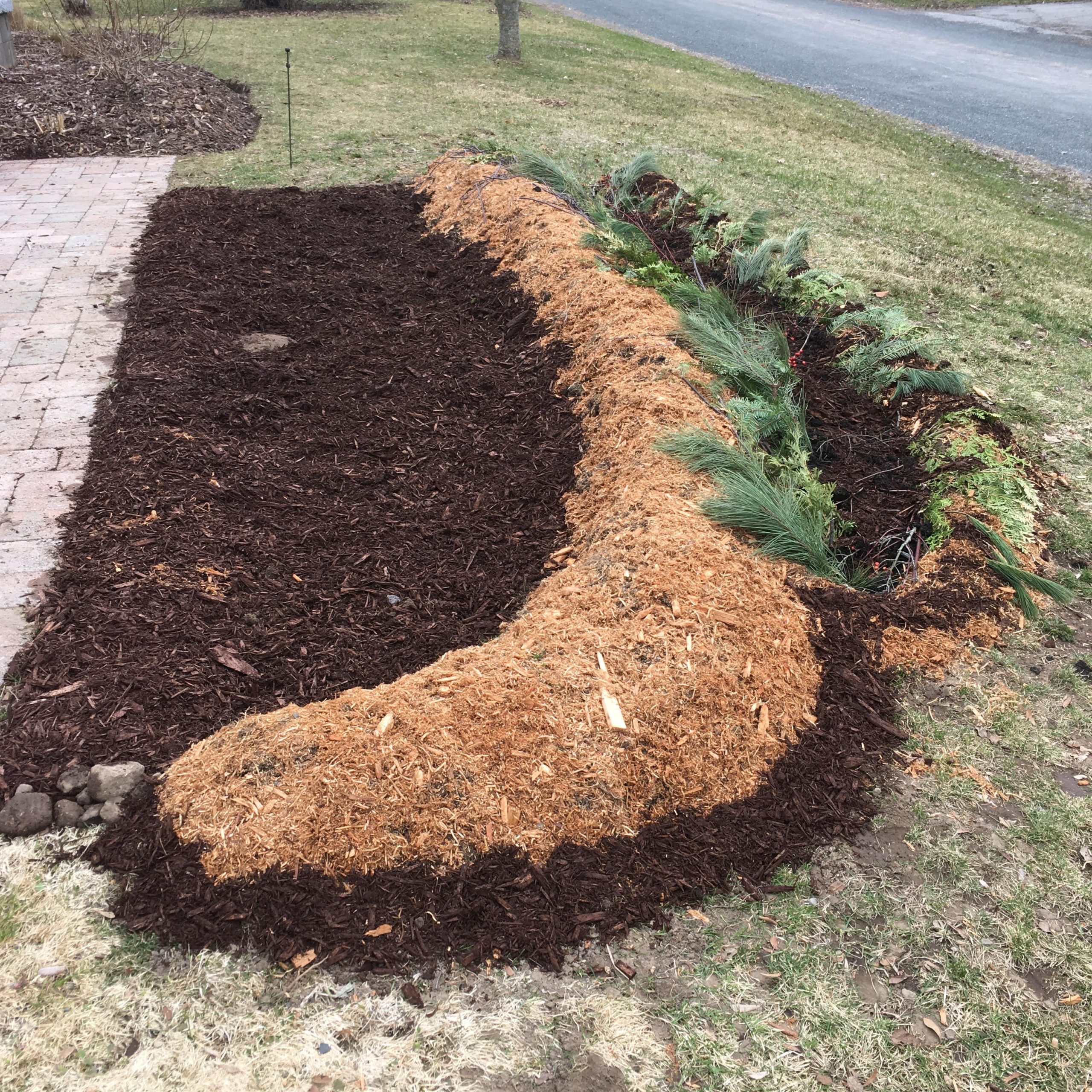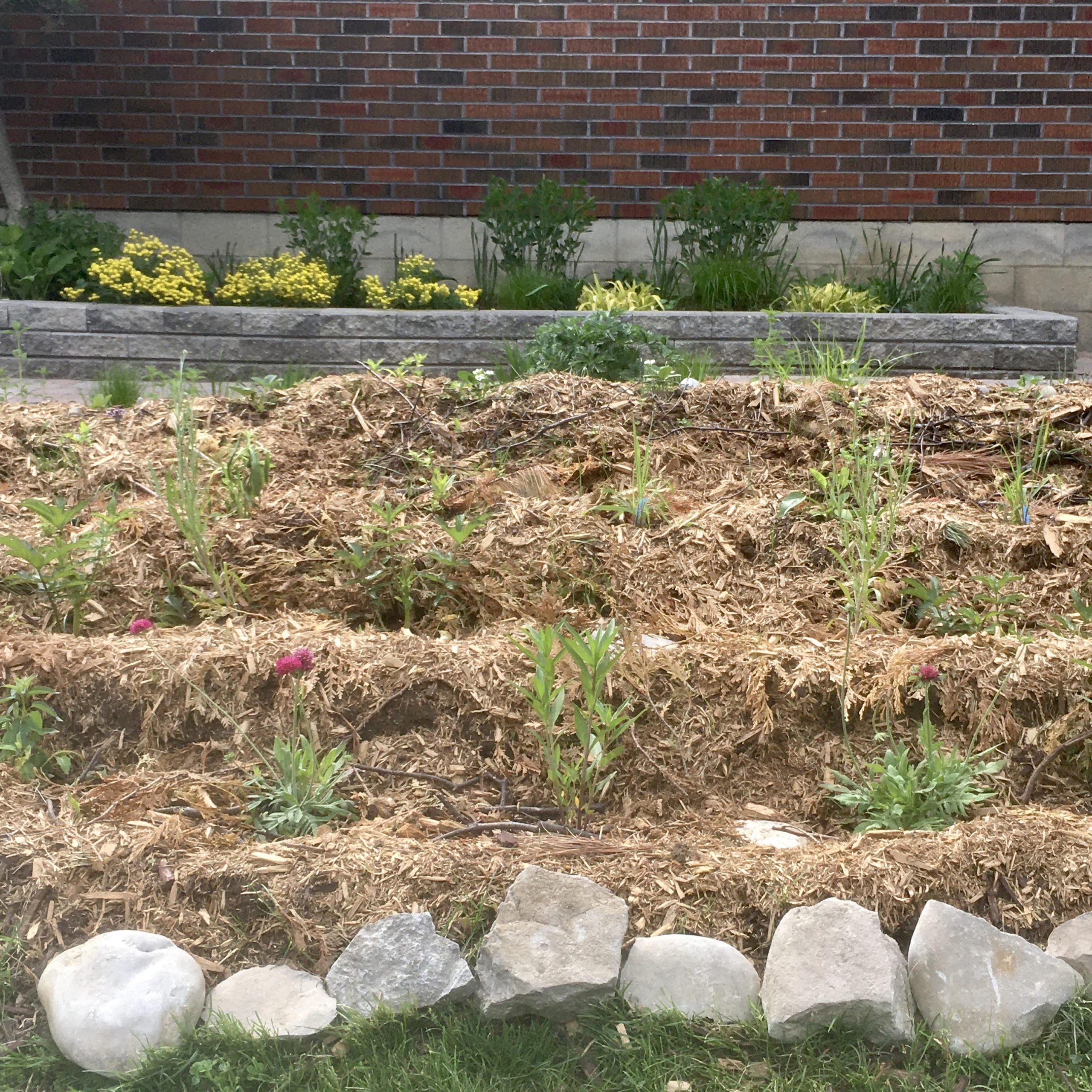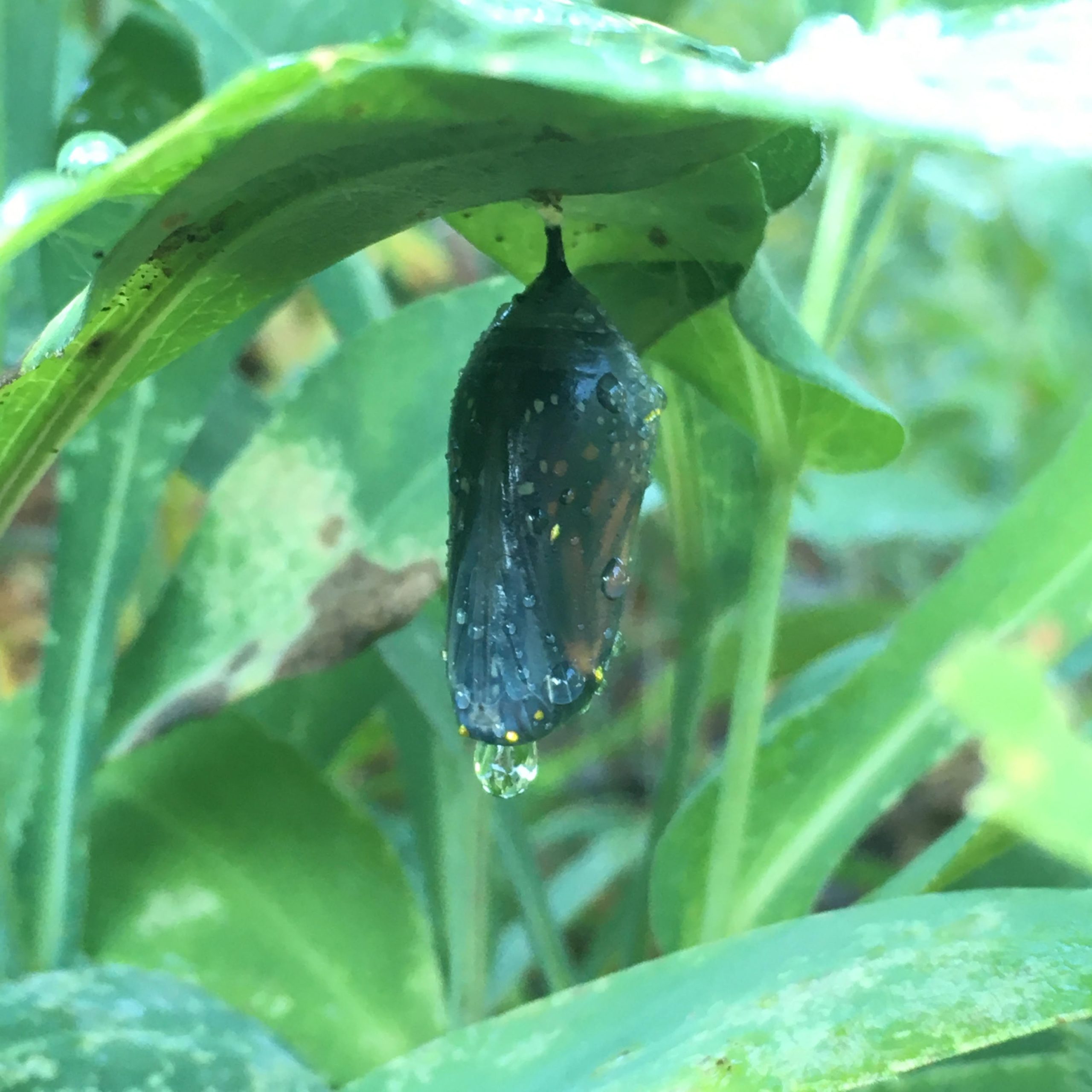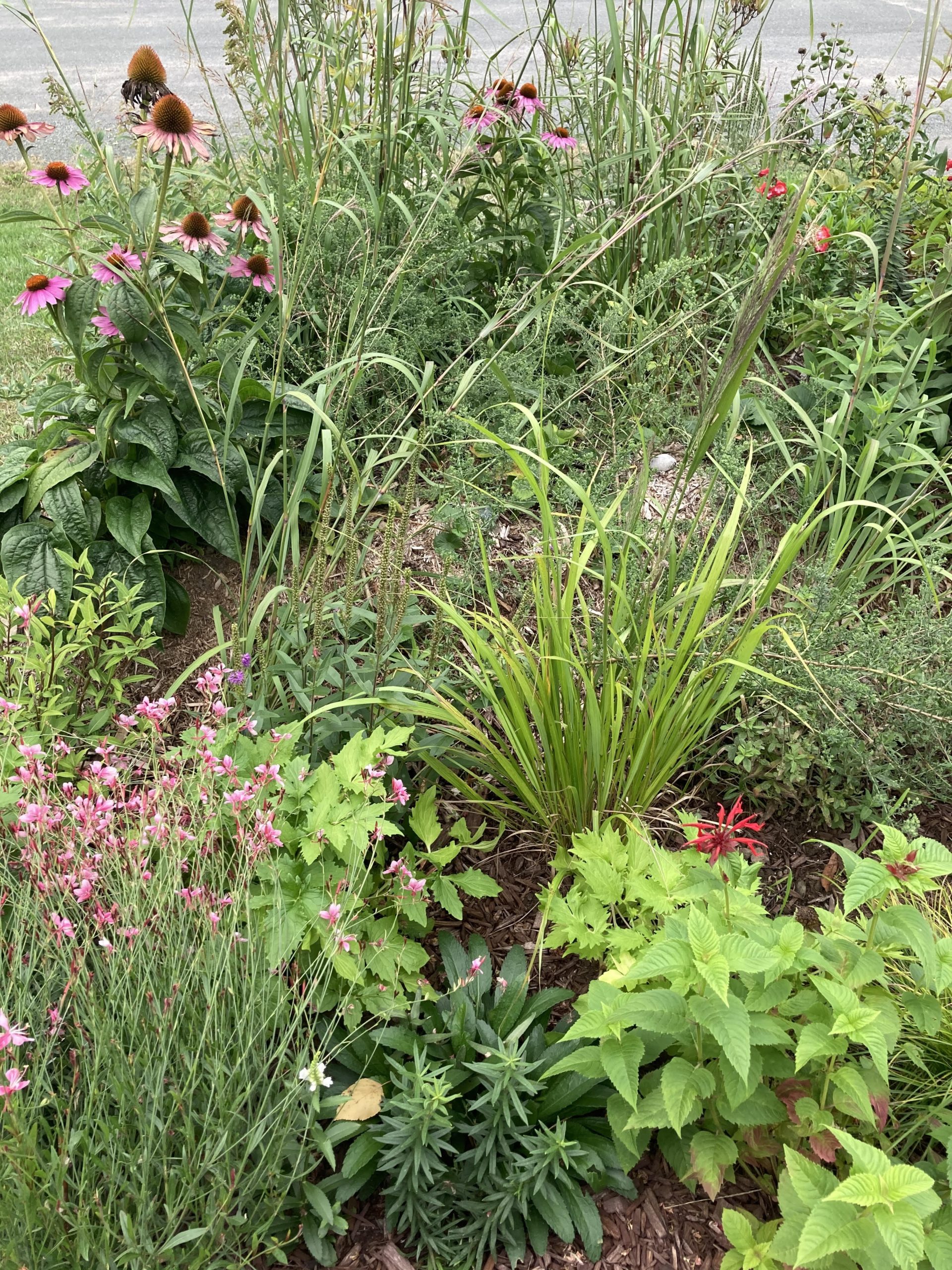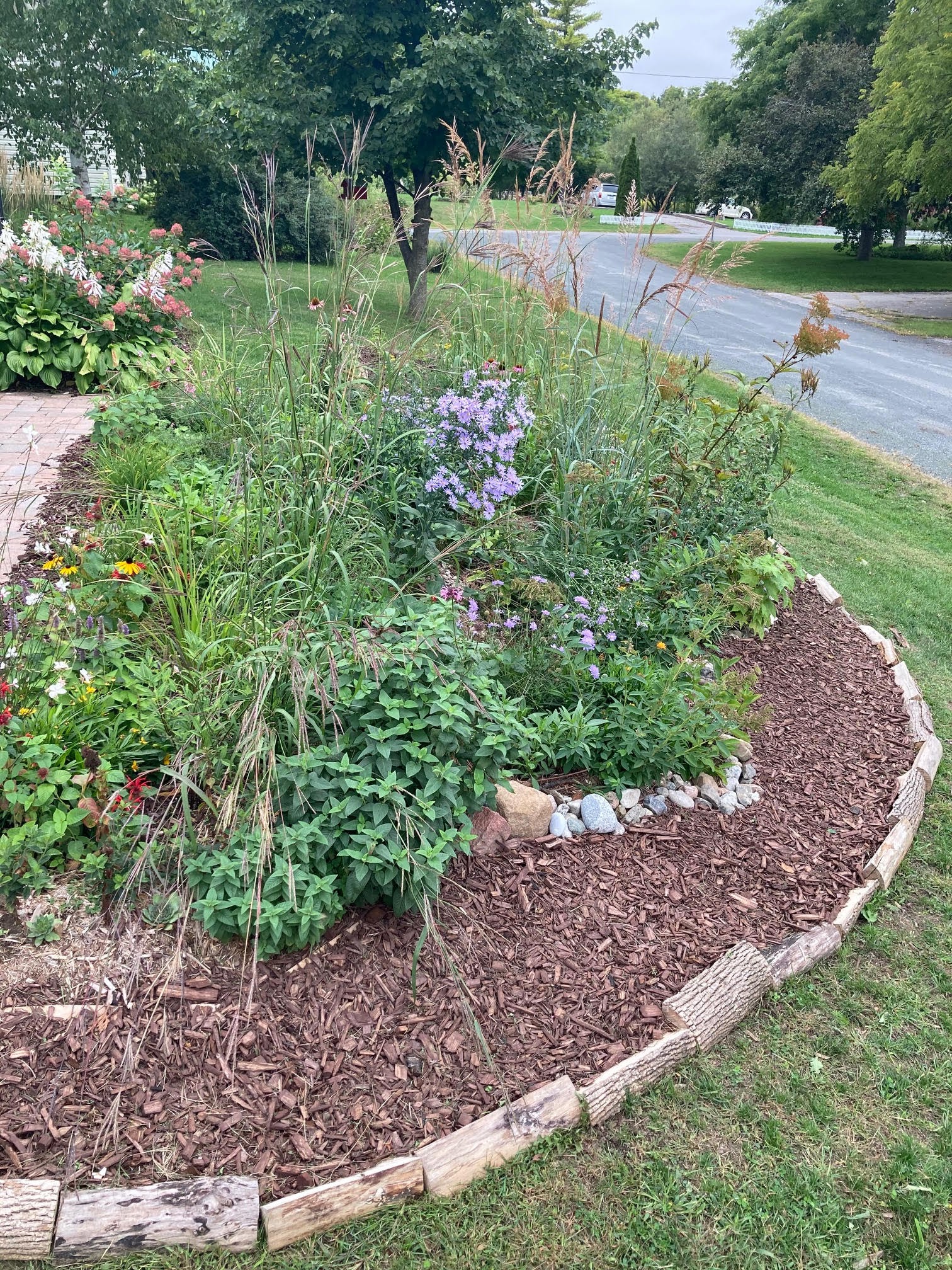Our front yard slopes down to the street, and had patchy grass and poor soil after an excavation. A perennial bed along the front walkway was on my list, but I was unsure how to tackle the poor conditions until, early in lockdown, I watched Sarah Harmer perform a live concert from her living room on Instagram. She mentioned a film called Inhabit, about permaculture, and I looked it up. It was such an interesting documentary, but I was intrigued by one project featured in it. In a long sloping field, a swale (a dug-out channel) was excavated perpendicular to the grade. It acted as a catchbasin for water and nutrients running down the hill when it rained, and relatively quickly filled up with fresh plant growth. I decided to try something like that in the front yard.
I stripped off the (terrible) sod with a lawn edger, and flipped the clods of sod upside down, building up a low hill or “berm” of mud and upside-down grass at what was to become the back of the main perennial bed on a flat section at the highest point, bordered by a stone walkway. I packed the berm down to make it as stable as possible. I then dug a small swale just beyond the berm, dropping down at least one edger’s depth and using the excess soil and sod to build a second berm. The swale is about eighteen inches between the berms, enough for a single row of planting. The berms are also made for a single row of planting on top of the berm with some slope on either side. I filled the swale with birch twigs found in the yard, leftover greenery from a holiday planter, and added some manure for good measure, borrowing ideas from a more intensive hugelkultur approach. Other than stripping the sod, I did no digging, instead just added the enriching material right on top. I then mulched the whole thing to suppress weeds.
If a bit of a berm garden is a good idea, more must be better, right? I carried on expanding down the slope, adding additional swales and berms. I added rocks for an initial edge (more on this later), and added some perennial divisions from other parts of the garden. , I also planted strawberries all along the top berm, and blueberry plants in the first swale.
Because I had used the leftover sod to form the berms, and soil disturbance was caused by stripping the sod, the seed bank came to life and weeds and escapee grass began to pop up. To suppress the weeds, I added a heavy layer of cedar mulch on the whole garden after a solid session of weeding to keep things as tame as I could. Weeding was required through the summer but not as intensively after this stage.
In late April/early May, I added many species of native plants, as well as complementary ornamental perennials to ensure something is always blooming. In the lowest swale, I have placed swamp milkweed and Knautia macedonica. The next swale up has Queen of the Prairie. The berm above that is planted with Indian grass (Sorghastrum nutans). In the swales, I have placed sun-friendly plants with some requirements for moisture and nutrients, and the berms are for true dry-garden plants intended to do well in poor soil and to root deeply to prevent erosion. The grasses I have included in the planting are Korean feather reed grass, big bluestem, and the petite sedge Carex pensylvanica which sends up fascinating tiny flowers early in the spring. I have taken a lot of inspiration for the planting choices from the tall grass prairie remnants near me at the Alderville Black Oak Savanna and Red Cloud Cemetery.
In August I tackled the only part of the berm garden that I wasn’t happy about: the messy edges. With the now rather wild naturalistic planting, I wanted a cleaner outline to make it clear this was an intentional garden. Rather than digging again and starting a new weed odyssey, I put down a layer of yard waste bags, which were then covered in mulch, and made an outline with firewood from a roadside market. With relatively little effort and low cost, the berm garden got a very nice makeover, much more suited to its front yard location.
Also on August 3, we discovered that the habitat we had hoped to build was happening. We had already been visited by bees, wasps and hummingbird clearwing moths, but I had been keeping an eye on a monarch caterpillar that took up residence in the swamp milkweed. It formed a chrysalis in the shelter of an aster nearby, and we spent a lovely long weekend morning watching it hatch and stretch its wings. Many of our plants came from the local conservation authority wildflower sale, including many host plants for butterflies and other pollinators and wildlife.
Even as my other gardens are fading as we head into the fall, the berm garden is still going strong. At this time gaura, butterfly weed, physostegia, valerian, Korean feather reed grass, big bluestem, heath aster, echinacea, amsonia, scarlet bee balm, penstemon, and wild bergamot are still putting on a show.
I consider this experiment a success so far. I stopped watering it during the stretch of drought in July, and few plants pouted. There are areas where wild bergamot is rooting effusively and it will need to be reined in next spring. We had a few strawberries, but the birds got most of them first. There will be many plants with seeds to harvest in the weeks ahead. I love the brilliant purple spray of asters that has just come out, brightening our gray fall days. There are so many aromatic plants, not just the wild bergamot, but also New Jersey tea and anise hyssop with its distinctive licorice scent. The fading Queen of the Prairie and swamp milkweed are still architectural, and many plants such as gaura, scarlet bee balm, coreopsis, and scabiosa have flowered reliably all through the summer months. I love sitting at the walkway with a coffee and watching for birds, bugs, and new blooms. This garden has been a source of real happiness during a difficult and strange time.
authored by Kat Kinch

